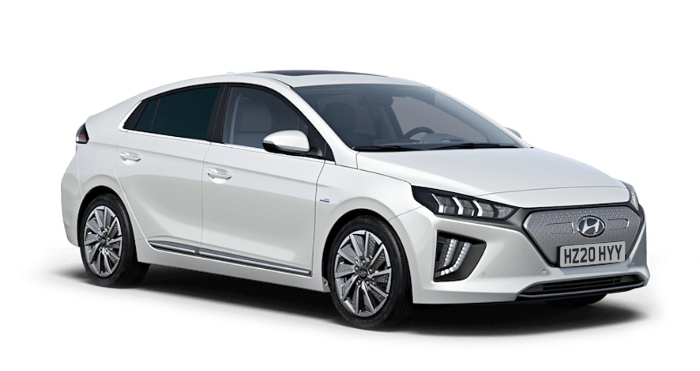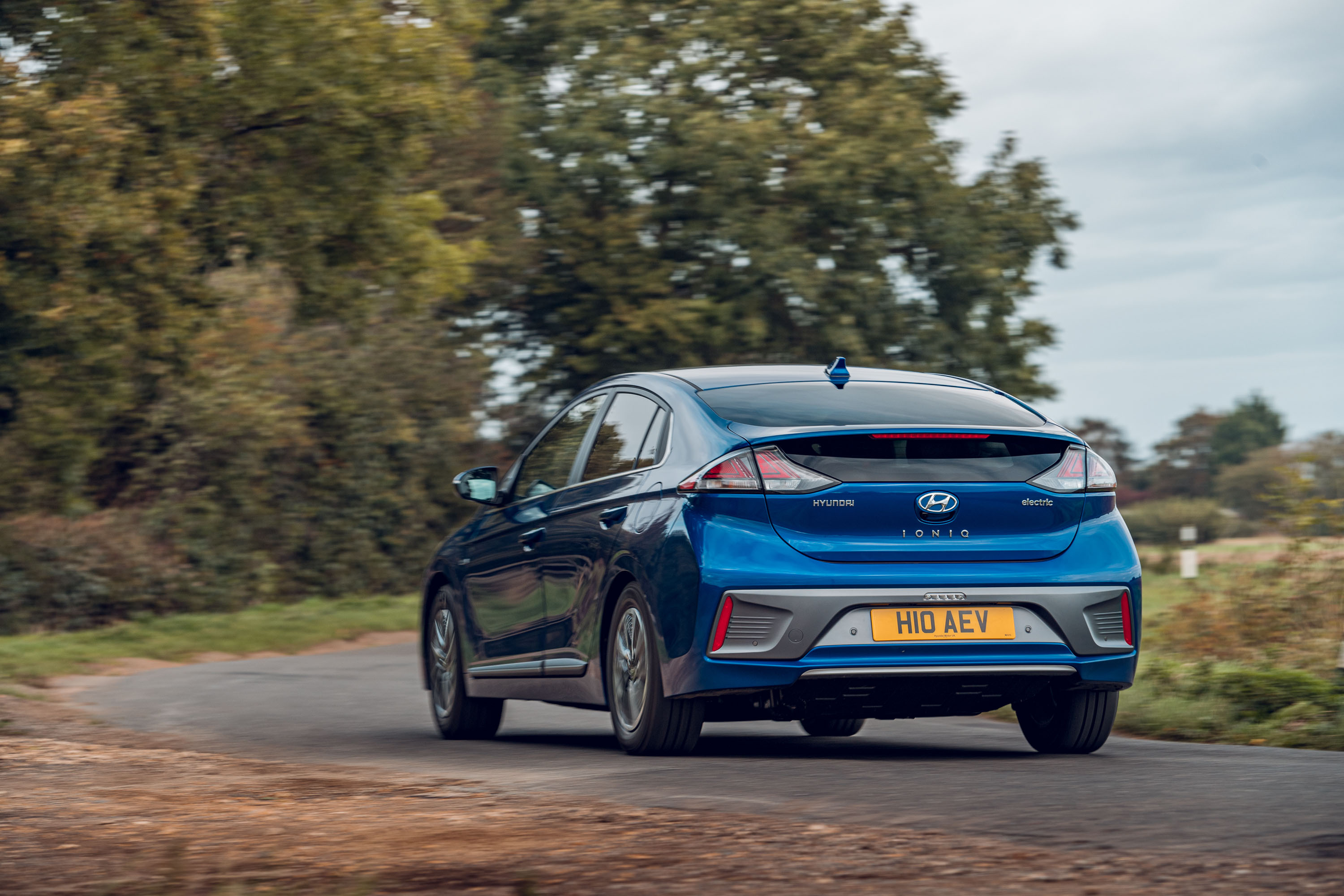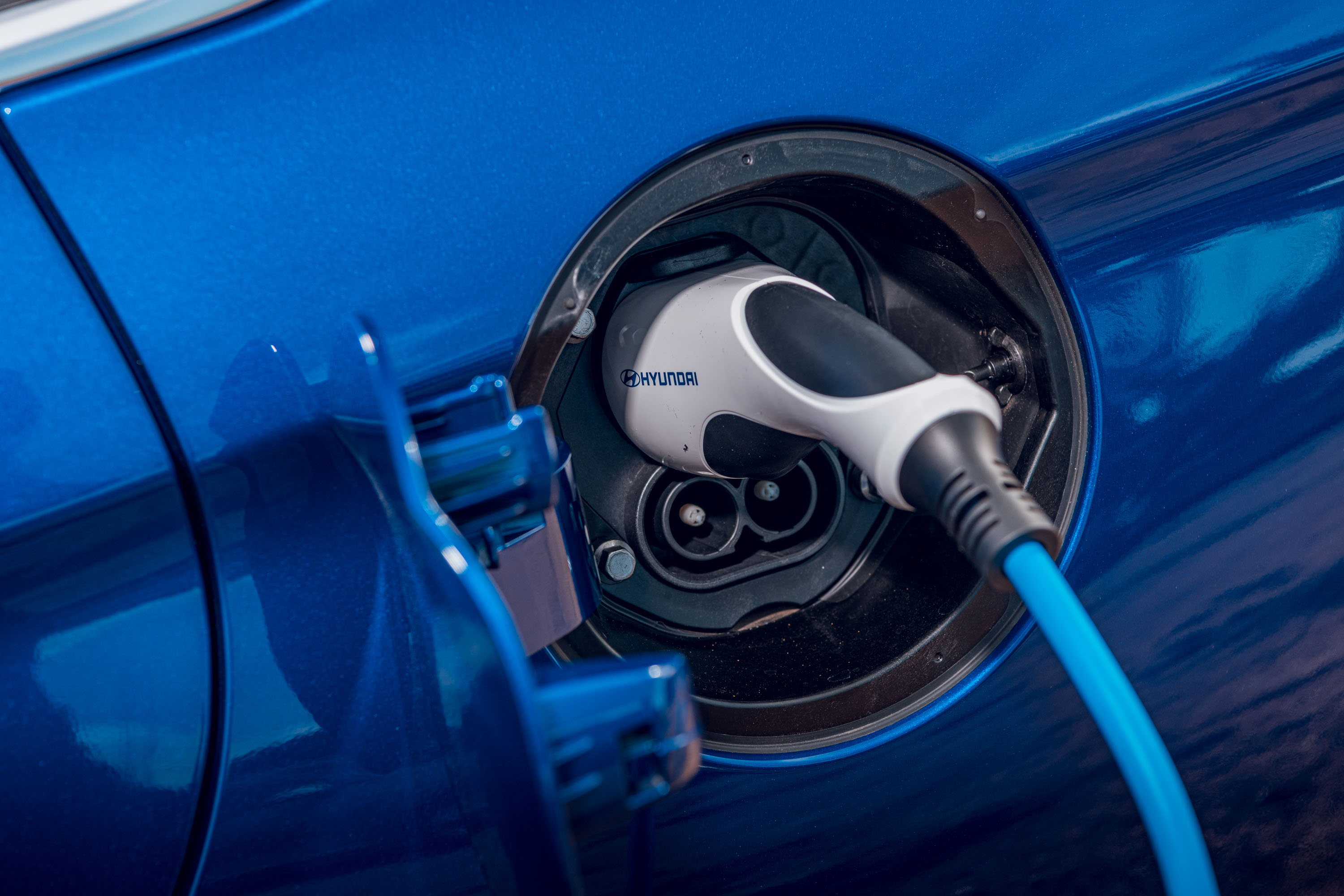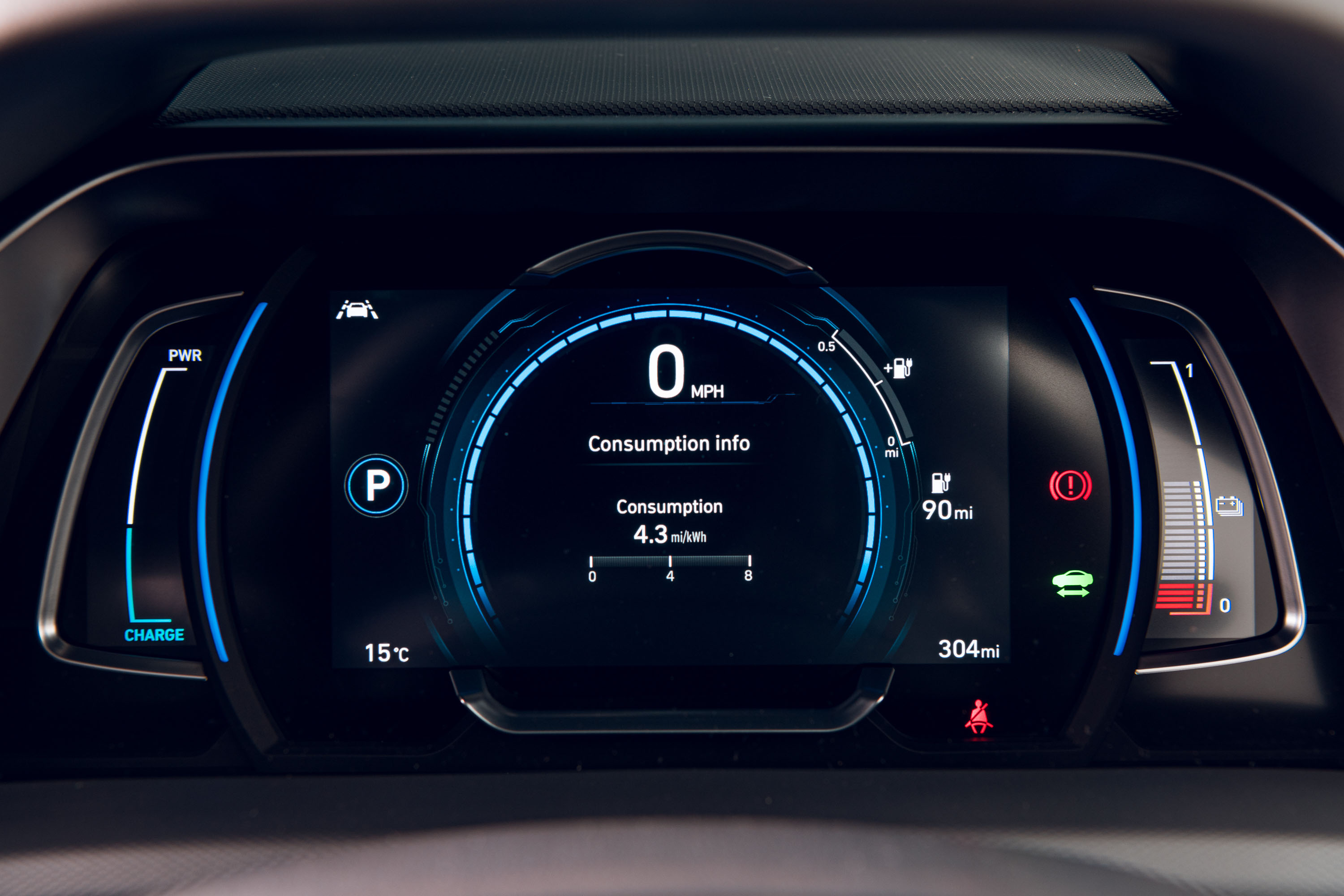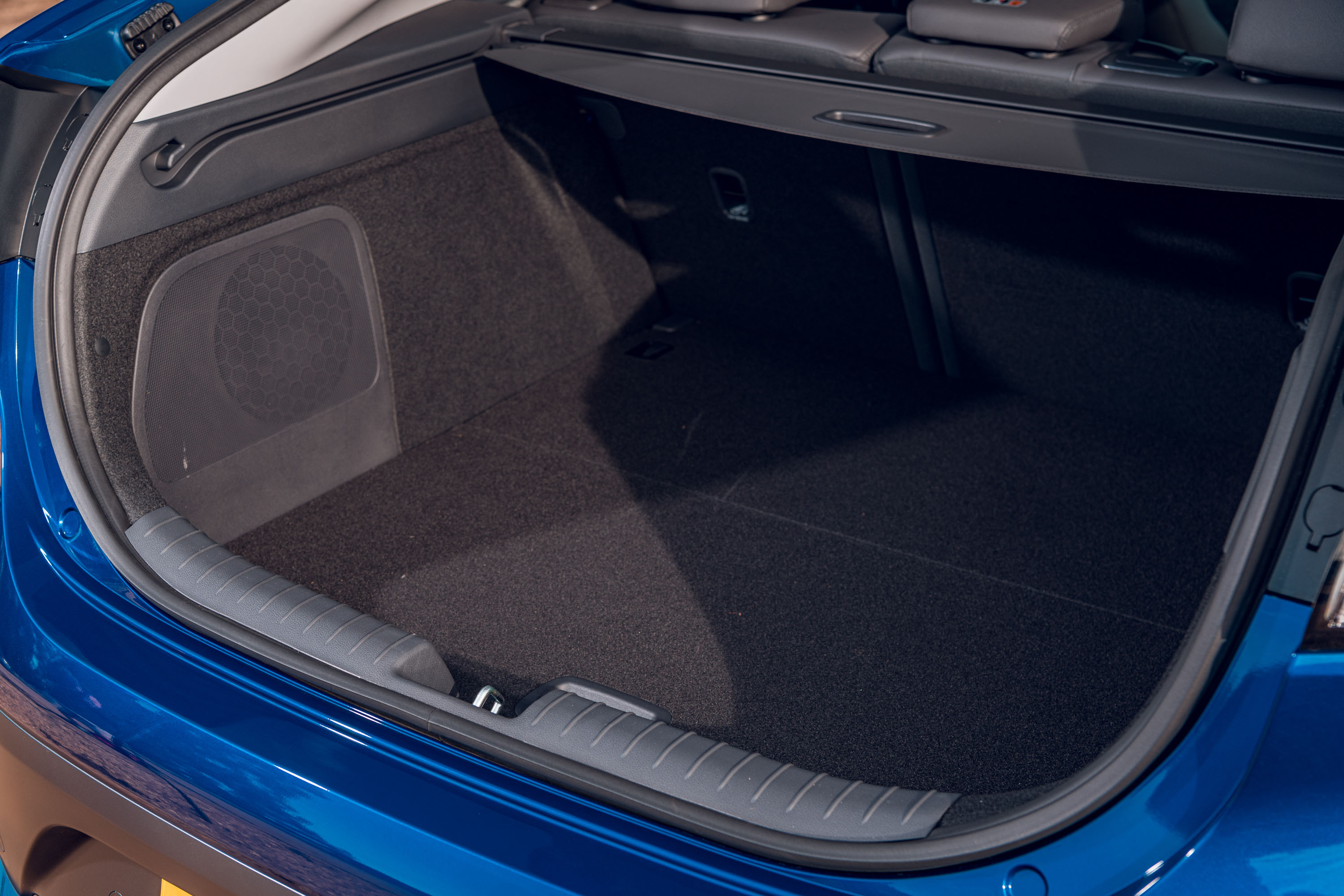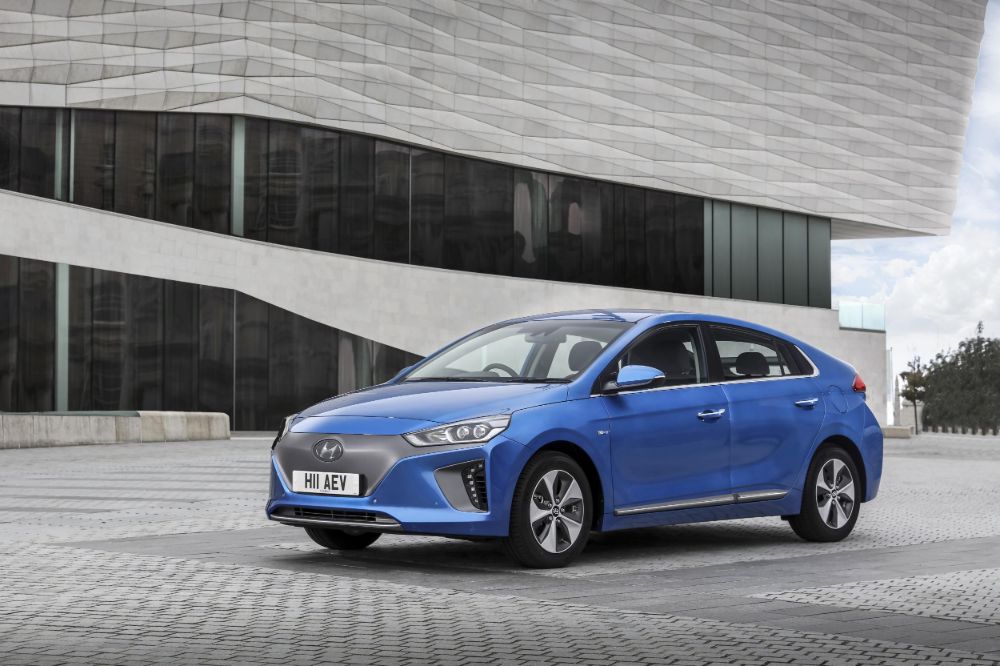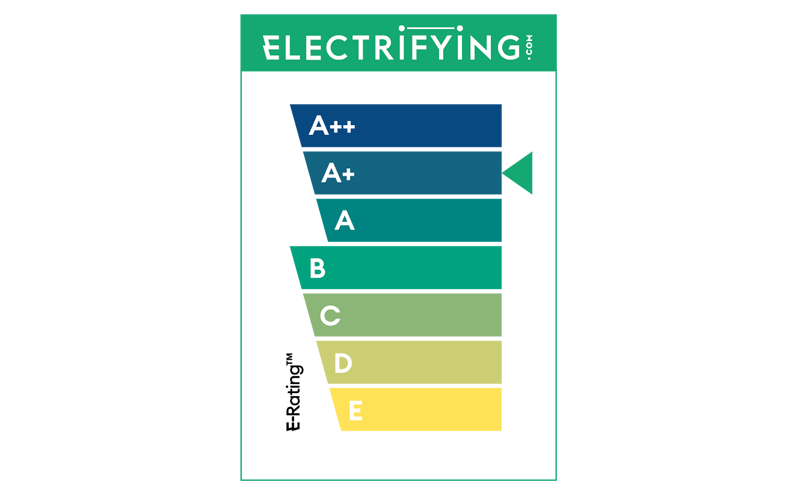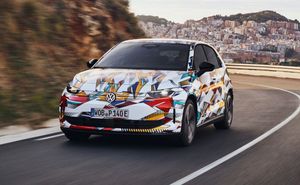Practicality and Boot Space
The Ioniq is the same sort of length and width as a VW Golf or Nissan Leaf, and as you’d expect it offers a usefully large amount of interior space compared to smaller cars like the Renault Zoe and Peugeot e208.
However, the Ioniq is not as tall as these more upright cars and has quite a swoopy roofline. This helps the aerodynamics but means lankier rear seat passengers will find their heads brushing on the roof. There’s no such issue for the front seat occupants though, as there’s plenty of space and adjustability to make sure you’re comfy.
As the batteries are stashed under the boot floor, the luggage space isn’t huge either – at 357 litres it’s only a little larger than a Renault Zoe’s. There’s still room for a pushchair or a few small suitcases though. Fold the seats down and things look much better; with 1,417 litres it is a bigger space than most rivals, including the Nissan Leaf.
Technology
The Ioniq was developed in South Korea, which is one of the most technologically advanced and connected countries in the world. So as you’d expect, this Hyundai has most of the gadgets you can expect from a modern car.
Even the cheaper Premium version of the Ioniq has enough equipment and connectivity to keep gadget fans happy.
Most of the tech is accessed via a 10.25-inch wide interactive display, which controls the car’s driving modes as well as charging and navigation. Entertainment can come from Apple CarPlay or Android Auto and, with multichannel Bluetooth, two phones can be linked to the car at the same time top save arguments about who gets to stream music.
Inevitably there’s also an app to connect to the Ioniq remotely from a smartphone. Hyundai calls it 'Bluelink' and it allows the owner to check the charge status, lock the car and receive health checks from on-board systems. Most usefully, you can schedule the temperature setting so on the heating remotely so it defrosts (or conditions the air in summer) while the car is plugged into a charger.
Safety
The Ioniq did really well in the independent testing organisation Euro NCAP’s crash tests, getting a full five star rating and an impressive 91% score for adult protection – although it did take place in 2016, so the tests have got stricter since then.
One particular disappointment which will have the NCAP boffins tutting these days is the decision to only fit some of the accident-preventing safety gadgets to the more expensive Premium SE model. These nice bits of tech include front parking sensors, blind spot detection, a lane departure warning system, and a sensor which warns you of moving hazards as you reverse out of a parking space.
On the plus side, some safety kit is standard on both models. This includes automatic braking sensors protect you by warning and applying the brake if it senses a pedestrian, cyclist or another vehicle. A rear-view camera and seven airbags are also standard.










